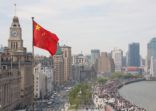The People’s Bank of China (PBOC) recently released draft rules offering specific definitions about credit assets. Standard credit assets refer to asset-backed fixed-income securities, mainly including government bonds, central bank bills, local government bonds, financial bonds, debt financing instruments of non-financial companies, corporate bonds and international bonds, according to a statement from the regulator’s website.
The definition of standard and nonstandard credit assets, which are backed by debt, has been unclear for banks.
The distinction is significant because the China Banking and Insurance Regulatory Commission in 2018 imposed restrictions on how much of their wealth management products (WMPs) banks could invest in nonstandard assets, limiting them to 4% of their total assets or 35% of the net assets of their WMPs, according to a Caixin report.
WMPs in China invest in products issued by trust companies, securities firms and subsidiaries of fund houses, and funnel the proceeds into loans for corporations.
The draft also noted that other types of credit assets need to fulfill certain requirements such as “tradability, adequate information disclosure, centralized registration and independent trusteeship, fair pricing and a sound liquidity mechanism. At the same time, these assets are able to be traded on markets approved by the State Council such as the interbank market or securities exchanges.
“Other credit assets will be considered nonstandard and will face tighter regulatory oversight and requirements including limits on tenor, quotas, centralized management, as well as information disclosure,” according to the draft.
Faster opening
On Tuesday, Premier Li Keqiang signed a State Council Order, announcing that foreign banks can set up wholly foreign-funded banks and branches at the same time.
“This move demonstrates the government’s policy intention to further open up the country’s financial markets to foreign investors,” according to Yulia Wan, VP-senior analyst in the financial institutions group at Moody’s, in a client note.
“The rules will broaden the scope of business for foreign banks in the coming years, especially the banks that see China as a strategically important market,” Wan added.
Separately, on Wednesday, PBOC and State Administration of Exchange said that a foreign entity can conduct a two-way non-transactional transfer of interbank market bonds held in bond accounts, which means direct transfer between capital accounts, under the qualified foreign institutional investor (QFII) or RMB qualified foreign institutional investor (RQFII) scheme.
The foreign entity only need to register once.
The new regulations will be implemented on 15 November, 2019.
In September this year, China officially abolished the QFII and RQFII quota restrictions.
Both the QFII and its renminbi equivalent programmes involve money going in to China. They allow foreign institutional investors, including fund managers, to invest in China’s onshore equities and bond markets, within specific quotas.
Since the implementation of the QFII system in 2002 and the implementation of the RQFII system in 2011, 400 institutional investors from 31 countries and regions have invested in China’s financial market through this channel, FSA previously reported.

















